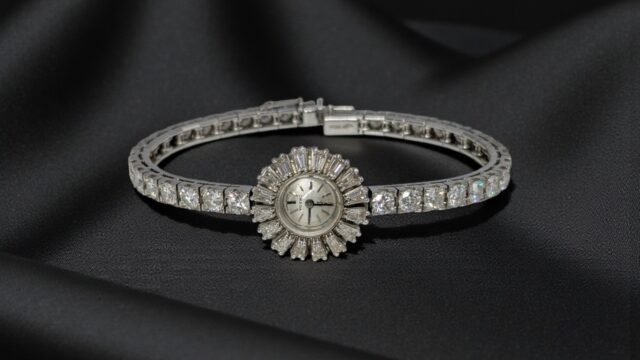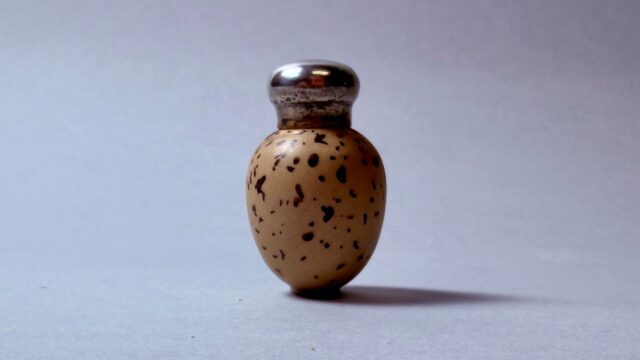Treen & Folk Art
Muffineers, pounce pots, goosewings, go-to-beds, pigs in clover, bilboquets, fids, costrels, snuff shoes, mangle boards, dish slopes, pill silverers, flummery moulds, revolving cats, fleam mallets, clickets, piggins, bickers, goffering irons, rush-nips and coggies….!
They may sound like the mumblings of Roald Dahl’s Big Friendly Giant..but these are in fact all domestic objects from a bygone era, mostly crafted and carved from wood - or what we call in the trade ‘treen’.
The term ‘treen’ is derived from an old English word meaning “turned” as in “turned on a lathe”.
Many small wooden domestic objects from Elizabethan times to the end of the Victorian period were made by skilled rural craftsmen or local amateurs, using a lathe or carved by hand. Some have survived into the 21st Century and collectors with an interest in domestic or rural history began taking notice of these relatively modest objects.
We can group treen into four categories:
1. Items from the kitchen including:
Butter and biscuit stamps for moulding confectionary and gingerbread, butter scoops and rollers, egg cups, nutcrackers and nutmeg graters, mortars and pestles, lemon squeezers, beer funnels, platters and bowls, coffee grinders, potato mashers, spice boxes and towers, staved tankards, knife boxes, cheese presses, salt boxes, cellars and grinders, bottle coasters, rolling pins, pie peels, apple corers, fruit-shaped tea caddies, dipper cups, early pyrographed armorial goblets etc.
2. Physician related items, including:
Bottle cases, pill rounders, eye baths, double measures, etc.
3. The lady of the house’s items, including:
Sewing threaders, thimble boxes, knitting and tatting sheathes, string barrels, tape dispensers, wool winders, clamps, etc.
4. Items of a personal nature, including:
Snuff boxes and rasps, tobacco jars, cribbage boards, glove stretchers and powderers, pipe stands, baby rattles, wig and watch-stands, money boxes, spinning tops.
The vast diversity of objects can be matched by a vast range of the wood specimens used. Treen objects are often in fruitwood such as apple, plum, pear and cherry. Sometimes forest-woods such as sycamore, holly, box, alder, walnut, birch, elm etc. And occasionally, if available, special items were crafted from exotic woods such as cedar, teak, coconut, coquille nut, arbutus and lignum vitae.
Good, authentic antique treen is characterised by patina, which is the impression of sheen and depth on a wooden item after years of handling through the item’s use and through polishing. Collectable treen items are wonderfully tactile, the wood is smooth and soft to the touch, it is worn down – the richer the patina then the more desirable the object and the better it will perform at auction.
Treen objects were made to be used, they were not made simply for display but many objects were given a decorative finish by the craftsmen, perhaps with basic carved motifs, initials and hopefully for the collector - inscribed dates. Having functional objects with decoration around one’s house would have been a way of showing-off the owner’s craft-skills, or show visitors that one could afford to purchase items that had been finely crafted.
Treen can make a whole spectrum of prices at auction. Interesting period items can be acquired for as little as £30 while rare early and interesting examples can make considerable sums at auction.
Positive factors which contribute to the price is carving with a date, the item has novelty factor and if it comes with good provenance relating to the region of origin and ownership.
Treen can come under the umbrella term of folk-art.
In the same vein as carved wooden items, local craftsmen would also fashion items out of metal, slate, straw, bramble, wool or bone to suit their purpose and depending on local availability.
One item of metalwork folk-art which is in demand with the country antique collectors, is the rush-nip or rushlight holder.
These rather rudimentary objects usually had wooden weights supporting iron tongs. The tongs would hold a cut of rush-grass dipped in grease or a burning splinter of wood. The grease would burn slowly down the rush to provide light – normally in a situation where candles were not afforded or unobtainable.Nips were also called nippers or a pair of nips. Rarer more decorative examples can make good prices at auction.
Goffering irons are another regular visitor to auction rooms in the UK. These were used to press ruffles and pleats in a garment by heating an iron rod on the stove, and then inserting into the cylinder. The clothing was then curled around the cylinder of the goffering iron and the heat would encourage the folds to keep.
The market for folk-art especially in Wales is extremely buoyant and we are proud of the way that we showcase these objects in our three times per year Welsh Sale and our Selections & Collections auctions. We have collectors buying locally, around the UK and we frequently sell examples to buyers in New England, USA.
Below are some images of recent items we have sold with a brief description and the prices noted. I have also included local Welsh clothing and Welsh hats which like treen has come from ordinary folk and is characterised by regional skills and tradition.
All these items transport us to a simpler way of life where objects were crafted or woven in a style that was local to the area. It is quite poignant to think of the craft skills that were passed between generations but in many cases lost during the passage of time.
If you have any treen or country antiques we would be most delighted to hear from you. Informal appraisals as always are free without obligation:
ben.rogersjones@rogersjones.co.uk
Before we go, here is a glossary of these Roald Dahl-esque named objects:
Muffineer – pyriform caster for shaking sugar onto muffins
Pounce – powdered pumice, cuttlefish bones or gum sandarac resin, used like blotting paper
Goosewing – a knitting sheath in the shape of a wing
Go-to-Bed – matches box with socket for holding a single match
Pigs in Clover – game or puzzle involving balls and concentric rings
Bilboquet – toy or game involving a ball and rod on a string.
Fid – sailors rope plaiting tool.
Costrel – small spirit barrel
Snuff Shoe – shoe-shaped snuffbox
Mangle Board – narrow pressing board used with a roller to dry wet clothes, often Scandinavian
Dish slope- stepped block for tipping a meat serving dish to collect the juices
Pill Silverer- hollow spherical container for coating handmade pills
Flummery – soft, sweet, wobbly dessert prepared in shaped moulds
Revolving Cat – dish warming stand composed of splayed rods
Fleam – old word for blood, special mallets and knives were used to bleed sick livestock
Clicket – clicker used by teachers for getting the attention of a child
Piggin, Bicker, Coggy – various bucket shaped containers with integral side handles (Regional)
Quaich – two handled shallow drinking cup (Scottish)
Rushnip – alternative to the candleholder
Goffering-iron – for ironing the fashionable ruffles or folds in a garment







































































Muffineer – pyriform caster for shaking sugar onto muffins
Pounce – powdered pumice, cuttlefish bones or gum sandarac resin, used like blotting paper
Goosewing – a knitting sheath in the shape of a wing
Go-to-Bed – matches box with socket for holding a single match
Pigs in Clover – game or puzzle involving balls and concentric rings
Bilboquet – toy or game involving a ball and rod on a string.
Fid – sailors rope plaiting tool.
Costrel – small spirit barrel
Snuff Shoe – shoe-shaped snuffbox
Mangle Board – narrow pressing board used with a roller to dry wet clothes, often Scandinavian
Dish slope- stepped block for tipping a meat serving dish to collect the juices
Pill Silverer- hollow spherical container for coating handmade pills
Flummery – soft, sweet, wobbly dessert prepared in shaped moulds
Revolving Cat – dish warming stand composed of splayed rods
Fleam – old word for blood, special mallets and knives were used to bleed sick livestock
Clicket – clicker used by teachers for getting the attention of a child
Piggin, Bicker, Coggy – various bucket shaped containers with integral side handles (Regional)
Quaich – two handled shallow drinking cup (Scottish)
Rushnip – alternative to the candleholder
Goffering-iron – for ironing the fashionable ruffles or folds in a garment




